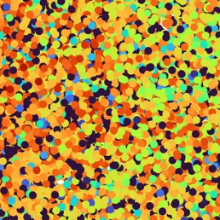New SFB 1313 Publication (University of Stuttgart), published in Modeling Earth Systems and Environment. The work has been developed within the SFB 1313 research project D03.
"Stability criteria for Bayesian calibration of reservoir sedimentation models"
Authors
- Kilian Mouris (University of Stuttgart)
- Eduardo Acuna Espinoza (University of Stuttgart)
- Sebastian Schwindt (University of Stuttgart)
- Farid Mohammadi (University of Stuttgart, former SFB 1313 researcher, research project D03)
- Stefan Haun (University of Stuttgart)
- Silke Wieprecht (University of Stuttgart)
- Sergey Oladyshkin (University of Stuttgart, SFB 1313 research project D03)
Abstract
Modeling reservoir sedimentation is particularly challenging due to the simultaneous simulation of shallow shores, tributary deltas, and deep waters. The shallow upstream parts of reservoirs, where deltaic avulsion and erosion processes occur, compete with the validity of modeling assumptions used to simulate the deposition of fine sediments in deep waters. We investigate how complex numerical models can be calibrated to accurately predict reservoir sedimentation in the presence of competing model simplifications and identify the importance of calibration parameters for prioritization in measurement campaigns. This study applies Bayesian calibration, a supervised learning technique using surrogate-assisted Bayesian inversion with a Gaussian Process Emulator to calibrate a two-dimensional (2d) hydro-morphodynamic model for simulating sedimentation processes in a reservoir in Albania. Four calibration parameters were fitted to obtain the statistically best possible simulation of bed level changes between 2016 and 2019 through two differently constraining data scenarios. One scenario included measurements from the entire upstream half of the reservoir. Another scenario only included measurements in the geospatially valid range of the numerical model. Model accuracy parameters, Bayesian model evidence, and the variability of the four calibration parameters indicate that Bayesian calibration only converges toward physically meaningful parameter combinations when the calibration nodes are in the valid range of the numerical model. The Bayesian approach also allowed for a comparison of multiple parameters and found that the dry bulk density of the deposited sediments is the most important factor for calibration.

Farid Mohammadi
M.Sc.Doctoral Researcher, Research Project D03

Sergey Oladyshkin
apl. Prof. Dr.-Ing.Principal Investigator, Research Project D03


